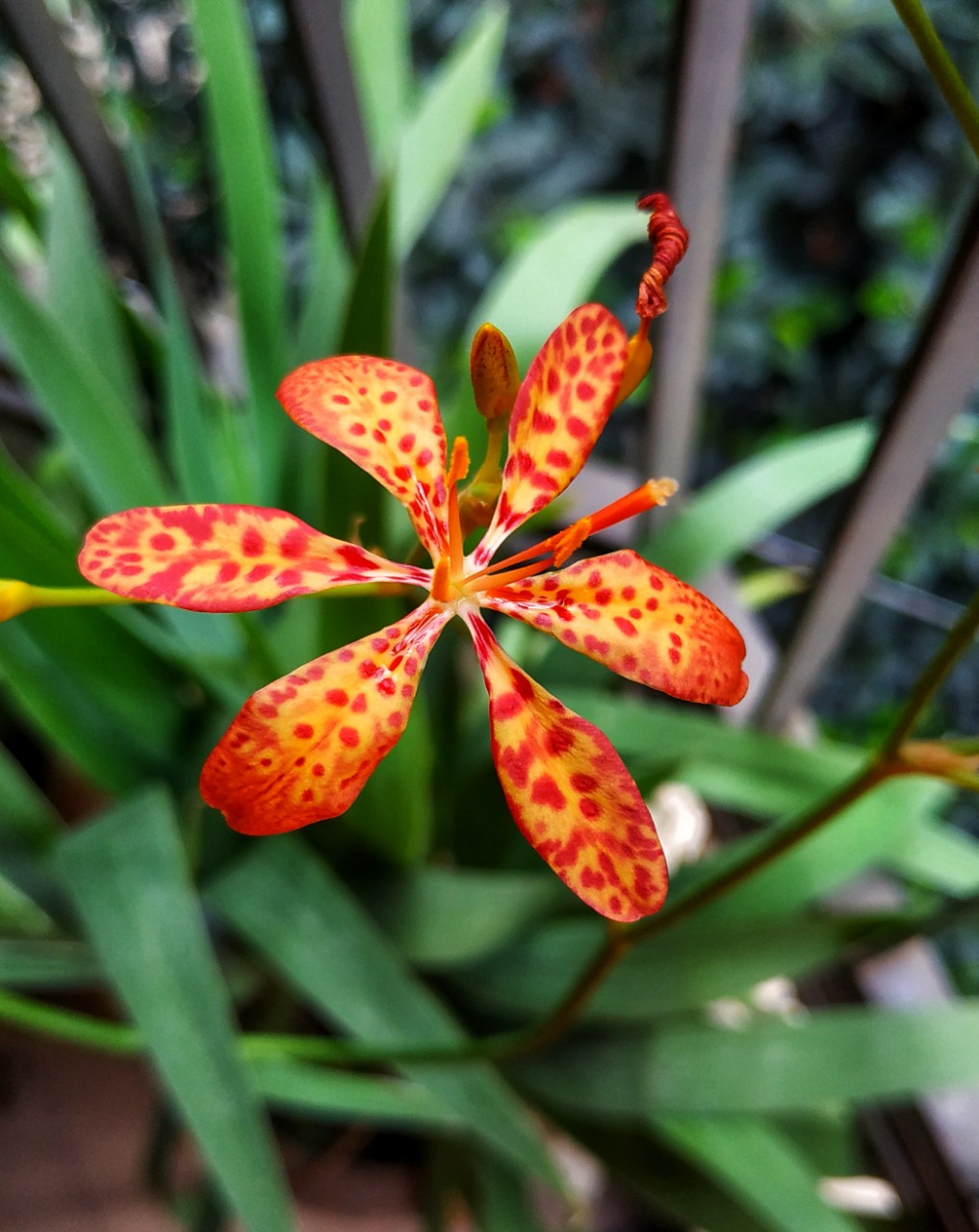Exploring Wiggins’ lily
Scientifically recognized as Lilium wigginsii and classified under Liliaceae, stands out as a distinctive Perennial herbaceous plant known for its unique characteristics. While it may also be found under other Synonyms, None known.withNone known form. You can use our free plant care app PlantPlants to identify Wiggins’ lily.
Temperature
30 F (min), 90 F (max)
Watering
Regular watering during the growing season, less water in dormant periods
Fertilizing
Balanced slow-release fertilizer
Sunlight
Prefers full sun to partial shade
Toxicity
Mildly toxic if ingested in large quantities



Appearance and Growth Of Wiggins’ lily
At maturity, this species reaches approximately 1-3 feet tall, presenting Linear to lanceolate leaves, alternate arrangement, green color along with Initially upright, trumpet-shaped flowers, usually in yellow to orange with dark spots, followed by Capsule containing seeds; seeds are small and flat. These features are supported by a reliable Bulbous root system, ensuring stability and sustained growth.
Wiggins’ lily Origin and Habitat
Native to Native to the western United States, specifically the Great Basin region, Wiggins’ lily thrives in Prefers montane meadows and open woodlands at elevations around Typically found at elevations of 4,000 to 8,000 feet. Best suited for USDA Hardiness Zone Zones 4-7. Whether grown indoor, in a curated garden or a more natural setting, its ecological requirements help maintain its vigor over time.



How to take Care of Wiggins’ lily
Light, Soil and Watering Wiggins’ lily.
You can use our free plant identify app PlantPlants to chose the best spot for Wiggins’ lily, This plant prefers Prefers full sun to partial shade and flourishes in Well-drained sandy loam or loamy soil with a soil pH of about 6.0-7.0.
Wiggins’ lily needs watering,Regular watering during the growing season, less water in dormant periods, guided by PlantPlants app, You can get plants daily watering schedule. to maintain Moderately moist soil, well-drained, ensure steady hydration. Applying water through Drip irrigation or deep watering session supports even distribution and helps prevent overwatering or dryness.
Temperature and Humidity
Wiggins’ lily performs best within 45-80 F. Its ideal growth occurs at around 65-75 F, though it tolerates ranges from 30 F (min), 90 F (max). Additionally, maintaining Moderate humidity, can tolerate dry conditions encourages healthy foliage and overall plant vigor.
Fertilization & Soil Health
Feeding with Balanced slow-release fertilizer at the recommended Seasonal Application Frequency on PlantPlants App keeps nutrients balanced. Incorporating Compost or aged manure enhances soil structure and fertility, while staying alert to Yellowing leaves, poor growth helps you adjust care as needed to maintain optimal plant health.
Routine and Maintenance
Regular attention ensures this plant’s beauty and longevity. After flowering in late summer for Cut back to the ground level tidies its appearance, while Every 2-3 years, if grown in pots may be necessary as it grows, requiring a Increase by 1-2 inches in diameter increase and a fresh Light, well-draining potting mix. for Staking or Support. May require staking for larger stems.
Seasonal Changes and Propagation of Wiggins’ lily
During Winter dormancy begins after the first frosts, growth may slow and some Leaves will yellow and die back in fall can occur. For those looking to propagate, consider Seed propagation or bulb division and provide Stratification for 30-90 days at cool temperatures for successful germination when starting from seed. If using cuttings, follow Allow cuttings to callous for a few hours before planting in moist potting mix to ensure successful rooting and healthy new plants.
Pests, Diseases and Prevention
our free plant identify and care app PlantPlants can help you diagnosisWiggins’ lily problems.Though generally robust, keep watch for Aphids, spider mites and remain vigilant against Fungal infections like botrytis blight. Implementing Good air circulation, avoiding overhead watering and applying Neem oil or insecticidal soap for insect control; remove infected plant parts for fungal issues when issues arise will help sustain the plant thriving.
Companions and Uses of Wiggins’ lily
This plant pairs nicely with Other wildflowers, such as lupines or asters and shows None noted, making it a flexible choice for various Ornamental gardens, meadow plantings, naturalizing in wildflower gardens.
Edible and Cultural Aspects
the Edible Parts: Bulbs can be cooked, but caution is advised. Toxicty of Wiggins’ lily, Mildly toxic if ingested in large quantities. learning about its Harvest bulbs in late summer after dormancy begins, Historically used by indigenous peoples, but not widely recognized in cuisine, and High in carbohydrates, some vitamins, and minerals can be intriguing for culinary explorers. Some traditions highlight its Some traditional uses among indigenous peoples; consult local herbalists for specifics or note its Viewed as a symbol of beauty in some cultures, often used in traditional rituals.
Conservation and Status
With an Not evaluated, proper Habitat protection and regulations on collection
Frequently Asked Questions
1. How do I propagate Wiggins’ lily?
You can propagate by division of bulbs or from seeds after stratification.
2. What are the ideal growing conditions for Wiggins’ lily?
It prefers well-drained soil, full sun to partial shade, and moderate watering.
3. When should I fertilize Wiggins’ lily?
Fertilize every 6-8 weeks during the growing season with a balanced slow-release fertilizer.
4. What pests affect Wiggins’ lily?
Common pests include aphids and spider mites.
5. When do I prune Wiggins’ lily?
Prune after flowering in late summer by cutting back to the ground level.
6. Is Wiggins’ lily edible?
While the bulbs can be eaten, they’re mildly toxic in large quantities; exercise caution.
7. What is the habitat of Wiggins’ lily?
It thrives in montane meadows and open woodlands at elevations of 4,000 to 8,000 feet.
8. How often should I water Wiggins’ lily?
Water every 5-7 days in summer and every 14-21 days in winter, adjusting based on rainfall.
9. What are the signs of nutrient deficiency?
Yellowing leaves and poor overall growth can indicate a nutrient deficiency.
10. What is the dormancy period for Wiggins’ lily?
It enters dormancy in winter, typically around the first frosts.



